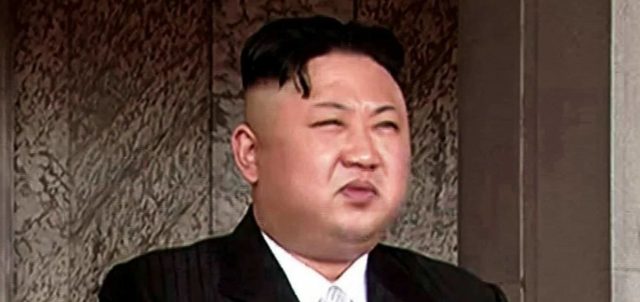
New satellite images show North Korea’s secret underground ICBM base near China North Korean leader Kim Jong Un. (Yonhap News/Newscom/Zuma Press/TNS)
Satellite images revealed this week show a new underground military base in North Korea that is used for housing intercontinental ballistic missiles (ICBM) just 15 miles from the border with China.
According to a report released Monday by the Center for Strategic and International Studies, the Hoejung-ni base is located roughly 210 miles north of the demilitarized zone with South Korea. It will likely house a “regiment-sized unit” equipped with ICBMs.
North Korea is not known to have ever made specific references to the existence of the Hoejung-ni missile operating base. This is the first in-depth open-source reporting confirming the ICBM base, though previous reports of an older base at Yongjo-ni surmised of its existence. pic.twitter.com/f84QMynusv
— CSIS Korea Chair (@CSISKoreaChair) February 7, 2022
“Although construction began almost 20 years ago, the Hoejung-ni missile operating base represents one of the latest Strategic Forces bases to be completed,” the report stated. “The fact that construction of it began so long ago suggests not only significant resource constraints, but also a considerable level of development planning that is rarely appreciated by outside experts and was likely linked to projected ICBM developments and basing needs.”
The report comes after North Korea launched 11 missiles in January alone, including the Hwasong-12 intermediate ballistic missile.
While North Korea is not expected to launch any missiles in February during the Winter Olympics in Beijing, researchers believe North Korean leader Kim Jong Un could escalate provocations in March.
“North Korea will likely escalate pressure on the United States by taking a series of steps toward an ICBM test,” said Cheon Seong-whun, a former head of the Korea Institute for National Unification, according to The New York Times.
It is unclear if the newly discovered and undisclosed Hoejung-ni base is fully operational. It is the second ICBM base the CSIC researchers have identified in North Korea — Yusang-ni base was discovered in 2019 roughly 40 miles northeast of Pyongyang.
“The organizational relationship between the Hoejung-ni and Yongjo-ni missile operating bases is unclear,” the report explained. “However, it would not be unusual for both bases being in the same geographic area to be subordinate to the same intermediate headquarters beneath the Strategic Force headquarters.”
The location for Hoejung-ni was likely chosen to act as a deterrent to a strike involving China.
“The position near the Chinese border acts as a potential deterrent to a pre-emptive strike that might impinge on Chinese security equities,” said Victor Cha, a senior vice president and North Korea expert at the CSIS.
In January, North Korea threatened to prepare for a long-term fight with the United States and restart nuclear testing it had paused during peace talks with former President Donald Trump’s administration.
During a meeting of the Central Committee of North Korea’s sole political party, the Workers’ Party of Korea (WPK), Kim Jong Un criticized the U.S. for condemning a series of recent ballistic missile tests, which he described as a “legitimate exercise of sovereignty.” In remarks first reported by North Korean state media and shared by KCNA Watch, the ruling communist party discussed ways to increasingly orient its military against the U.S., including restarting the nuclear weapons tests.




